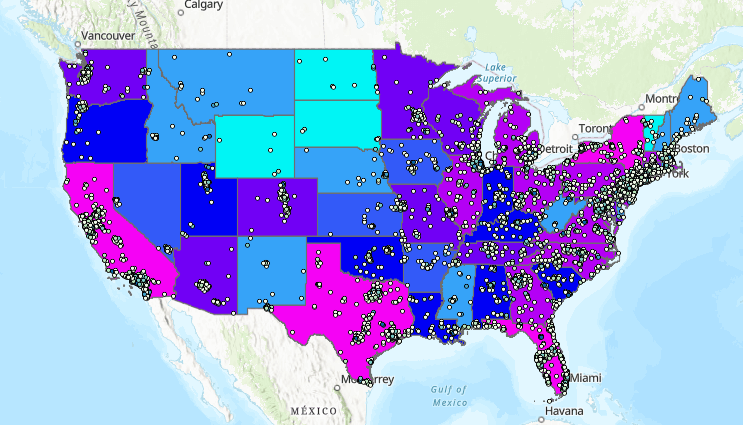As has been highlighted by the recent COVID pandemic, healthcare systems in the United States struggle with addressing substantial disparities in population health and healthcare1.
One key factor in these disparities is that large parts of the U.S. have significant shortages of primary, dental, or mental health care providers2.
Why are there so many shortage areas?
In short, because students who are from these areas don’t become doctoral level healthcare providers. Students from wealthier backgrounds are more likely to practice in affluent areas similar to where they grew up. Because medical school and other health professional classes are skewed toward students from wealthy households and wealthier students go on to serve fewer patients from urban and rural underserved communities, physician shortages in these areas are perpetuated. Study after study confirms if students are from an underserved area or a member of an underserved population, they are more likely to go on to serve in an underserved area or work with underserved populations3.
To increase the number of healthcare providers in underserved areas more students from underserved areas need to enroll in and successfully complete health professional programs.
So, what are the factors keeping these students from successfully completing health professional programs?
One key factor is the information gap. Multiple studies have identified that lack of information is a key reason why students from underserved communities do not pursue doctoral-level health professional programs. This information gap is confirmed by students themselves as well. As shared in a recent JAMA article, “Many of us don’t know the little nuances [or applying to medical school] because we didn’t grow up in this milieu.” The process for preparing for and being admitted to health professional school is often simply unknown to underrepresented students and those from underserved communities.
“So often students will graduate from high school and enter college, and will say that they are interested in becoming a doctor or a dentist or other health professional, but have no idea what it takes or how to plan their educational experience so that they will be prepared not only academically, but be aware of when to apply, how to get information.”
– Dr. Louis Sullican, Altering the Course
What HPSA is Doing to Help
Reaching Underserved Students Where They Are
How can we get underserved students the information and tools they need to be successful health professional applicants and students? By offering resources and services via the internet at no cost.
The map below shows how the Student Doctor Network, published by HPSA, is reaching these students. Points on the map are SDN members who identified a shortage area zip code as their hometown during registration and have been active within the past year.

Providing Resources For These Students
To combat this information gap, HPSA provides a range of services and resources designed to help students from underserved communities increase their chance of admission to health professional schools. Visit the Resources page to see a list of our donor-supported resources.